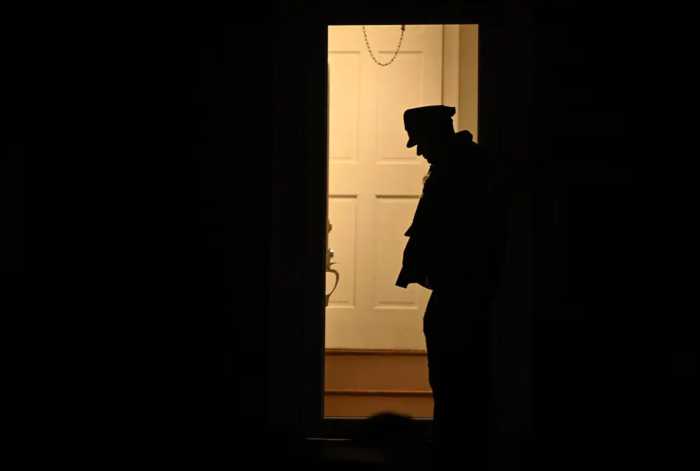
Jeremy Jones and his wife, Clare Hilger, lived in a two-story cottage from the 1920s, just a few feet from Rockaway Beach. They loved spending time in the back garden and having family over for shrimp boils and barbecues.
And then the worst storm in 100 years washed it all away. Superstorm Sandy’s 115 mph winds broke through their windows and doors in 2012 and robbed them of their picture-perfect beach oasis. It’s been seven years and Jones said he is just starting to see normalcy in the Rockaways again.
But he and neighbors worry over how their community will be affected if the Williams Transco natural gas pipeline is constructed. The proposed 23-mile-long pipeline would carry fracked gas from Pennsylvania to the Rockaways running directly through New York Harbor, 17 miles underwater.

Jones spent nearly five years rebuilding his home after Sandy. He worries that even one mistake along the pipeline could undo years of progress.
“We lived through that entire nightmare and know how devastating weather can be and we definitely want to support other forms of energy that don’t have quite the same impact as fracked gas," he said.
Safety concerns
The Williams Transco pipeline would be constructed this fall under the Northeast Supply Enhancement project. It would connect to the Williams Rockaway Delivery Lateral pipeline, which was completed in 2015 and delivers natural gas to the National Grid distribution system and Con Edison, which then delivers it to New York City and Long Island.
If approved, the new pipeline would be placed approximately 1 mile from Staten Island and approximately 3.7 miles from the Rockaways, according to the Surfrider Foundation.
Williams Energy says the pipeline is necessary to meet growing demand. The original Transco pipeline in New York City, operated by Williams, carries natural gas from Texas to the east coast and has been in use since 1951. National Grid, the primary gas provider in New York, said the additional pipeline would increase local gas capacity by 14 percent. The company also has said that the project would reduce CO2 emissions in New York City and Long Island, as natural gas emits less carbon dioxide than coal or oil.
But New Yorkers, activists and some politicians have rallied against the pipeline, with concerns about energy efficiency, the effects on marine life, safety and more.

“I’m worried about anything getting stirred up, any sort of leak, because it will directly affect me,” said Jones, who regularly surfs, swims and fishes along the Rockaway coast.
Williams has suffered numerous explosions along its pipelines in recent years, including a series of explosions and a fire that resulted in four deaths in 2015. There was also a natural gas pipeline rupture and explosion in Lycoming, Pennsylvania, in 2015, and an explosion at a Williams compressor station in Branchburg, New Jersey, that resulted in 13 injuries in 2013.
The company has also faced multiple violations for its safety protocols, including a $140,000 fine from the Environmental Protection Agency in 2016 for not safely discharging pollutants into the air and not maintaining records of fuel use at the Fort Beeler Gas Processing Plant in West Virginia. There have been at least five other safety and environmental risk violations against the company’s pipelines in the past five years, according to the Occupational Safety and Health Administration, EPA and U.S. Department of Transportation.
“Safety is the most important aspect of our operations. Our Transco pipeline, we’ve got a very long history of providing New York safe, reliable service,” said Williams senior communications specialist Chris Stockton. “I’m not aware of any incidents occurring on the Transco pipeline in New York.”
Williams isn’t the only energy provider to face serious incidents along its pipelines in recent years. Since 1999, there have been 5,709 reported significant pipeline incidents among various providers and companies, according to the Pipeline and Hazardous Materials Safety Administration (PHMSA). Those incidents resulted in 291 reported deaths, 1,267 injuries, and more than $9.1 billion in costs.

The Federal Energy Regulatory Commission (FERC) approved the pipeline on May 3. But the project cannot go forward without state approval, and the New York State Department of Environmental Conservation (DEC) faces a May 16 deadline for its report.
Williams also must secure a water certification from New Jersey, which faces a June 20 deadline.
Communities still recovering
The Rockaways are still recovering economically from Sandy’s devastation.
“Some of the stop lights still have the plastic bags around them that they put there right before Sandy," said Far Rockaway resident Saylor Pochan, 43. "All of the houses that got twisted and all the people that lost their places in Breezy Point, there’s big scars where all those places are gone,” Pochan said.
Approximately 75 percent of businesses in the Rockaways were impacted by Sandy, according to the New York State Comptroller, and the average damage reported from businesses in Rockaway Park and Rockaway Beach was between $100,00 and $500,000. Many of those businesses are owned by locals who also had damage to their homes.
“Businesses are opening. We’re building on the momentum that we had before the storm,” Jones said. “To see that potentially threatened by a man-made disaster that’s entirely avoidable … just doesn’t make a lot of sense.”

Stu Kennedy, 36, has lived in Clinton Hill, Brooklyn for nearly seven years and enjoys going to the Rockaways, where he also volunteers as part of the Billion Oyster Project. He is worried that the project would damage the environment he loves.
“You put a pipeline in, all the digging, the dredging, the pile driving, that’s what lifts up these sediments,” he said.
Williams says on its project website that the project’s design has “no negative effect on Rockaway or its beach” and that it will use a jet trenching method during construction. The method, the website states, will ensure “nearly all of the sediment would be retained” and that the “fraction of the sediment released during jet trenching will remain in the lower half of the water column.”
“We are actually going above and beyond the regulations to ensure the facilities installed are safe,” said Stockton, adding that they will fill the pipe with water before gas operation and test the pipe’s strength at 1.5-times the maximum pressure that will be used during operation. This he said, will ensure there are no leaks.
While Kennedy and other activists argue that there are safer and cleaner options than gas to meet the region’s energy needs.
“Let’s get off natural gas and let’s start doing natural wind farms, solar, real clean options so we can phase out and do what we can to mitigate climate change," Kennedy said.
As a resident of the Rockaways for nearly 50 years, 71-year-old Joan Flynn is anxious to see what the fate of the Rockaways will be. The Rockaway Lateral Pipeline, which the new Williams pipeline will connect to, was “snuck in” while she and her neighbors were recovering from Sandy, she said.
“I got no place to go. If you put down roots and you dig them up, you’re dead,” she said. “The fact that they’re still choosing fracked gas in any way, shape or form is absurd and the only thing that is keeping total sustainability from going forward is political will.”





































